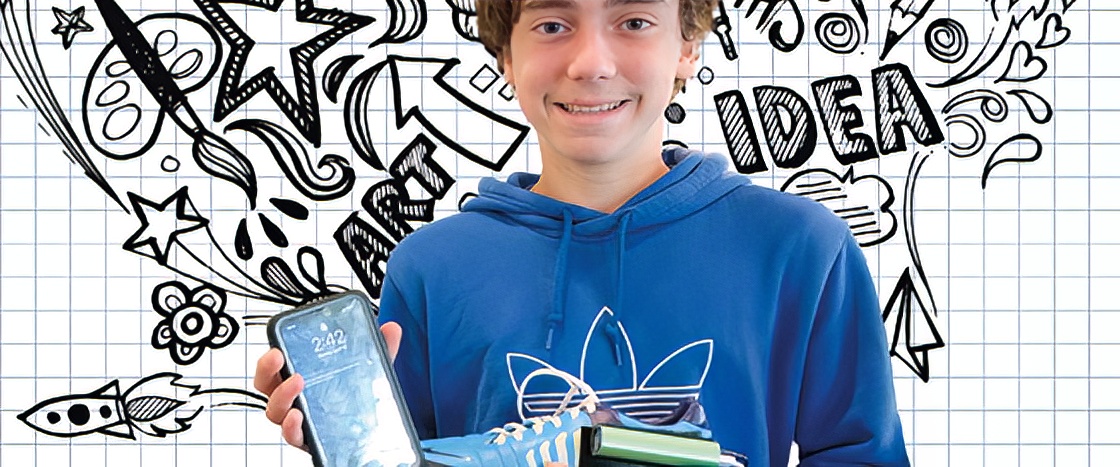Lino Marrero was at soccer practice when his cell phone died. He didn’t have a charger, so he couldn’t call his mom to pick him up. He remembered learning about energy in science class and had an idea: What if he could use the energy created while running to power his phone?
Lino researched how to convert kinetic energy (energy of movement) to the type of energy that can charge a battery. He invented thin devices that fit inside shoe inserts. But the inserts were uncomfortable to wear. After a few more tries, Lino put the technology inside the shoe’s soles, or bottom layer. Success! The shoes could charge a phone while still feeling good on his feet.
Lino named his invention Kinetic Kickz. Though he’s still perfecting the idea, people may eventually connect the charger to a phone or another device.
Lino Marrero was at soccer practice. His cell phone died. He didn’t have a charger, so he couldn’t call his mom to pick him up. He remembered learning about energy in science class. That gave him an idea. Running creates energy. What if he could use that energy to charge his phone?
Lino researched how to convert kinetic energy (energy of movement) to the type of energy that can charge a battery. He invented thin devices that fit inside shoe inserts. But the inserts were uncomfortable to wear. After a few more tries, Lino put the technology inside the shoe’s soles, or bottom layer. Success! The shoes could charge a phone while still feeling good on his feet.
Lino named his invention Kinetic Kickz. He’s still perfecting the idea. But people may eventually be able to connect the charger to a phone or another device.

